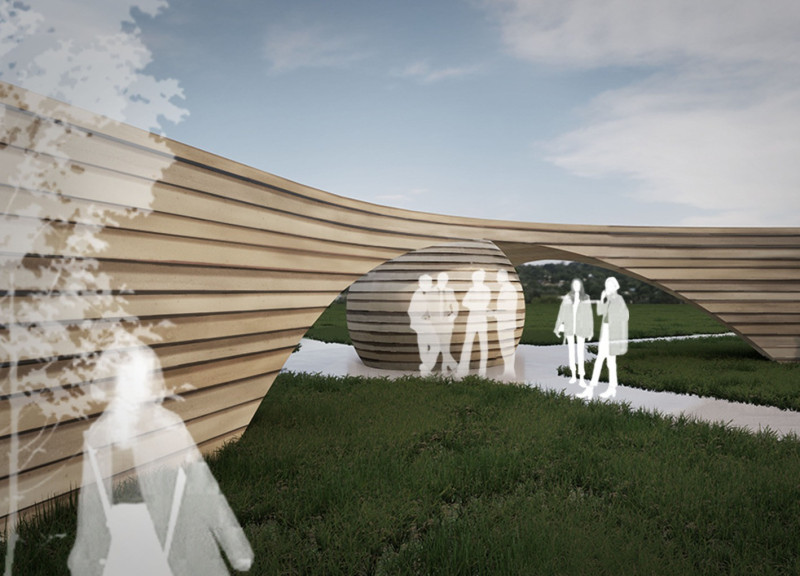5 key facts about this project
The Pavilion of Time, situated in Budapest, Hungary, serves as a gathering space for the local community while exploring the passage of time through its design. It connects the built environment with nature, inviting contemplation on how both influence each other over time. The overall design encourages reflection on the idea of temporal change and the impact it has on architectural forms.
Design Concept
The Pavilion is based on the idea that time is not static but fluid. The walls feature a regular horizontal division that will evolve into a more organic shape as they are exposed to weather and other environmental factors. This transition highlights the link between the structure and its surroundings, encouraging visitors to engage with the concept of time and its effects on both architecture and nature.
Structure and Materiality
A key element of the Pavilion is its rammed earth wall, which plays a significant role in the narrative of time and transformation. Over time, the wall will experience erosion, gradually losing a few centimeters of its surface due to rain and other elements. Erosion checks, which are wedge-shaped elements embedded in the wall, serve important functions. They help control water flow, reducing erosion while adding visual interest to the wall as it ages.
Aesthetic Transformation
Initially, the rammed earth wall has a sharp, geometric appearance defined by horizontal lines. However, as it endures erosion, the embedded wedge-shaped stones become more noticeable, leading to a more natural look with gentle curves. This change demonstrates how the structure ages and interacts with the environment, providing a visual representation of time in action.
Interplay with Nature
The Pavilion illustrates how architecture can engage with natural forces. Each design choice reflects a mindful effort to embrace the processes of the environment, ensuring that the structure develops a unique character over time. Visitors can experience the relationship between human activity and nature. The evolving surface of the wall stands out, inviting reflection on the meaning of time and permanence in a space designed for contemplation.



















































